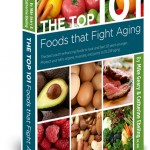
Inflammation is actually a product of our immune system, and is our body’s protective response to injury, dangerous bacteria, viruses, or toxins. Normally it is part of a healthy immune response to prevent dangerous invaders from taking over our bodies.
Primitive man needed a strong immune system to fight off dangerous and deadly diseases and infections. Today there are relatively few infectious diseases our immune systems need to fight. While the ability to thrive and survive as humans had a lot to do with the strength of our immune systems, it seems in the absence of many infectious diseases, our immune systems and inflammation have turned on ourselves.
Inflammation can cause aches and pains, arthritis, bursitis, or any type of health issue that ends in -‘itis’.
Some of the more subtle forms of inflammation can include sore stiff muscles, tendonitis, joint aches, acne, red eyes, itchy irritated nose, itchy, rashy skin, allergies, swelling or puffiness, and more. Inflammation can be as minor as a pimple on your nose or as major as a heart attack.
Long term inflammation can cause heart disease, diabetes, Alzheimer’s disease, arthritis, certain forms of cancer, diminished mental and physical energy, the loss of muscle mass and wrinkled, sagging skin.
Even though inflammation is our body’s natural response to protect our bodies from invaders, unfortunately, our overly active immune systems and the inflammatory response end up damaging our own bodies. Often inflammation is sneaky and silent, but can be deadly, too. Inflammation may be totally invisible to our own eyes, and often only specific blood tests can uncover high inflammation levels.
It used to be thought that aging came with chronic inflammation, which then progressed to chronic disease. Over time, chronic inflammation can lead to breakdown of collagen, destruction of the joints, blood vessels, digestive system, brain and nerve tissue and other organ systems, and premature aging, disease and ultimately, death.
What we now know, though, is that aging does not have be accompanied by inflammation, meaning that many of us can live to a ripe old age without chronic disease.
According to Russell Tracy, professor of pathology and biochemistry at University of Vermont College of Medicine, and a pioneer in research that demonstrated the role of inflammation in heart disease:
“Inflammatory factors predict virtually all bad outcomes in humans. It predicts heart attacks, heart failure, diabetes, becoming fragile in old age, cognitive function decline, and even cancer…”
Elderly patients with Alzheimer’s disease (a chronic, progressive, degenerative disease of the brain), show areas of the human brain clogged up with neurofibrillary tangles and plaques. These same patients show many inflammatory cells and cytokines (a product of the immune system response). Clearly Alzheimer’s disease has a strong association to inflammation.
In diabetes, inflammation and insulin resistance work their destruction together. High blood sugar raises the body’s inflammatory markers. The drugs that seem to restore insulin sensitivity are also effective at reducing the body’s inflammatory markers like IL-6 and CRP.
Even osteoporosis and depression may have inflammatory roots, along with age-associated weakness. Scientists have even found that inflammatory activity breaks down skeletal muscle, leading to the loss of lean muscle mass. And on top of that, extra body fat tends to make these diseases strike earlier, because fat cells increase inflammation, and bring on accelerated aging.
Often low-level inflammation in our bodies is nothing like the raging infection, high fever or allergic reaction that you can’t help but notice. As inflammation in various parts of the body simmers in the background, over the years, damage beings to accumulate–in the heart, the brain, your nerves, your digestive system, your bones and joints and more.
What you eat, and how much you eat has a definite effect on the level of inflammation in your body.
Some of the ‘healthy’ foods you eat every day may actually be causing inflammation in your body.
Food allergies and sensitivities, can actually be one of the biggest contributors to inflammation.
And, guess what? The typical high-carb/high grain, low fat diet is extremely inflammatory. Refined sugar and other high glycemic, grain based foods make blood sugar and insulin levels rise, and put the immune system on high alert. High insulin levels also activate enzymes that raise levels of inflammatory arachidonic acid in our blood.
Allergies or not, much of the inflammation in our bodies begins in our digestive systems with reactions to common foods eaten every day like pasteurized dairy, corn and wheat. These foods contain proteins that easily spark the inflammatory cascade. You may be eating these foods on a daily basis and they are causing inflammation–and you not even know it!
All forms of sugar, processed foods, pasta, breads, pastry, baked goods, and snack foods such as rice and corn cakes, chips, pretzels, etc., cause a highly destructive pro-inflammatory response in our bodies. If we choose sugary or starchy foods, we trigger this pro-inflammatory release of sugar into our bloodstream.
Your best bet to dramatically decrease inflammation is to cut out wheat/gluten, corn and dairy for two weeks and note the difference. Add in one food at a time and see how your body reacts. Wait 24 hours before adding another foods. Many people often find a surprising difference in how they feel with increased energy levels, better moods, clearer skin, absence of aches and pains and a loss of weight.
Fats and Inflammation
Once thought of as healthy, polyunsaturated oils like safflower, cottonseed, sunflower, corn, peanut and soy, are primarily made up of omega 6 fatty acids. Our diets have an overabundance of omega 6 fats, which creates an unhealthy imbalance. Without enough omega 3 fatty acids to hold omega 6 fats in the proper ratio, the body turns the omega 6 fats into arachidonic acid, which is highly inflammatory.
The proper balance of omega 6 fats to omega 3 fats is about 2:1 or 1:1. Unfortunately, most diets (heavy in grains, vegetable oils and grain-fed meat) are out of balance with regard to omega 6 and omega 3 fats. A standard diet often has a ratio of about 20:1, omega 6’s to omega 3’s. A diet this heavy in omega 6 fats increases inflammation in the body.
These unhealthy fats compete with omega 3 fats in our cell membrane (which is made up of fatty acids). When the cell membrane is made up primarily of omega 6 fats and trans fats, the membrane actually becomes less resilient and brittle, which limits the exchange of nutrients and oxygen. This poorly structured cell cannot fight dangerous invaders effectively, and eventually weakens and dies.
Both trans fats and omega 6 fats encourage the storage of body fat, especially in the abdomen. Excess belly fat, which can be measured as a waist size of 35 inches or more for a woman and 40 inches or more for a man, means higher levels of inflammation, since abdominal fat produces inflammatory chemicals in the body.
A diet heavy in omega 6 fatty acids (vegetable oils) actually increases wrinkling and aging of the skin as well leading to more cancerous changes from exposure the sun. In test subjects, dietary omega 6 fatty acids increased levels of PGE(2), an inflammatory messenger chemical that promoted the growth of pre-cancerous and cancerous skin cell changes.
Fortunately there are several anti-inflammatory fats, which are highly effective in helping our bodies stay younger and fight the affects of aging and inflammation.
Omega 3 fats contain two components that fight inflammation in our bodies: EPA and DHA.
The anti-inflammatory properties of EPA have been studied at length and proven to fight inflammation and a variety of health issues from depression, to heart disease and cancer.
It is important to note:
grain fed meat and farm-raised fish contain primarily omega 6 fats, while
wild-caught fish and grass fed meat contain mostly anti-inflammatory omega 3 fats.
Monounsaturated oils like extra-virgin olive oil, oil from nuts, avocados, and coconuts are rich in polyphenols and antioxidants that fight inflammation.
Below is a list of foods, oils and spices that counteract inflammation.
Anti-Aging, Anti-Inflammatory Foods, Spices And Nutrients
Certain spices, herbs and teas contain some very powerful compounds that fight inflammation. Some of the most powerful anti-inflammatory phytochemicals are in these herbs and spices:
- Turmeric
- Basil
- Thyme
- Cloves
- Oregano
- Sage
- Rosemary
- Ginger
- Chili Peppers
Some of the spiciest anti-inflammatory additions to a meal are hot peppers–including jalapeños, habeneros, and cayenne peppers. Chili peppers of all types include capsaicin (the hotter the pepper, the more capsaicin it contains), which is a potent inhibitor of a substance in the body associated with inflammation. Capsaicin also helps to raise metabolism and burn fat as well.
Green, white, oolong, and rooibos tea contain potent catechins, bioflavonoids and polyphenols that reduce inflammation and limit free radical production. Drinking 2 cups of these kinds of tea a day, can reduce inflammation significantly, as well as adding powerful antioxidants that fight aging and disease.
Foods High in Anti-Inflammatory Fats
Salmon
Sardines
Anchovies
Grass fed Meats
Free range, organic eggs
NutsAvocados
Coconut
Extra Virgin Olive Oil
Flaxseeds
Coconut oil
Anti-Inflammatory Foods
Chocolate (70% or more cacao)
Red Grapes
Kelp
Shiitake mushrooms
Papaya
Pineapple
Broccoli
Brussels sprouts
Cauliflower
Blueberries
Jalapeño Pepper
Habenero Pepper
Banana Pepper
Chili Peppers
Look for the new 101 Anti-Aging Superfoods and the Anti-Aging Superfoods Recipe book due out this week!

Till next time,
Stay healthy and lean and young!

 Catherine (Cat) Ebeling RN BSN,is a back to basics diet and nutrition specialist. In addition to her advanced degree in nursing from a major medical school, she has spent the last 30 years intensely studying diet, health and nutrition. She also has a book titled “The Fat Burning Kitchen, Your 24 Hour Diet Transformation” that has sold over 60,000 copies worldwide, and has helped thousands of people transform their lives, lose weight and improve their health.
Catherine (Cat) Ebeling RN BSN,is a back to basics diet and nutrition specialist. In addition to her advanced degree in nursing from a major medical school, she has spent the last 30 years intensely studying diet, health and nutrition. She also has a book titled “The Fat Burning Kitchen, Your 24 Hour Diet Transformation” that has sold over 60,000 copies worldwide, and has helped thousands of people transform their lives, lose weight and improve their health.
Her mission is to help others prevent disease, lose weight, and live their best life ever.
Nutrition made Easy. Simple.Smart.Nutrition.
The Fat Burning Kitchen will get you started on the path to a healthy diet, weight loss and vibrant health.You will notice a difference in the first 24 hours! Learn about the so-called ‘health’ foods you may be eating that are actually ruining your health, and causing you to gain weight. And find out the best, fat-burning super-powered nutritious foods to eat to lose fat, gain boundless energy, and feel better than you ever have!
 I’ve got a great article today from my co-author, Mike Geary, who has some surprising facts about one of the foods most people eat daily. You may be shocked to read this!!
I’ve got a great article today from my co-author, Mike Geary, who has some surprising facts about one of the foods most people eat daily. You may be shocked to read this!! Catherine (Cat) Ebeling RN BSN, is a back to basics diet and nutrition specialist. In addition to her advanced degree in nursing from a major medical school, she has spent the last 30 years intensely studying diet, health and nutrition. Get the latest Gluten Free, Superfoods Recipe book HERE–The Fat Burning Kitchen Superfoods Recipes. Cat also has a book titled “The Fat Burning Kitchen, Your 24 Hour Diet Transformation” that has sold over 100,000 copies worldwide, and has helped thousands of people transform their lives, lose weight and improve their health.
Catherine (Cat) Ebeling RN BSN, is a back to basics diet and nutrition specialist. In addition to her advanced degree in nursing from a major medical school, she has spent the last 30 years intensely studying diet, health and nutrition. Get the latest Gluten Free, Superfoods Recipe book HERE–The Fat Burning Kitchen Superfoods Recipes. Cat also has a book titled “The Fat Burning Kitchen, Your 24 Hour Diet Transformation” that has sold over 100,000 copies worldwide, and has helped thousands of people transform their lives, lose weight and improve their health.
 Vitamin D is of primary importance to optimal health, and can affect everything from your immune system (one of the biggest reasons people tend to get sick in the winter), to hormone balance, weight gain or loss, muscle strength, bone density, cancer risk, and mental health. Other studies show that vitamin D helps with rheumatoid arthritis, type 1 and type 2 diabetes, cancer prevention, blood pressure, and heart disease.
Vitamin D is of primary importance to optimal health, and can affect everything from your immune system (one of the biggest reasons people tend to get sick in the winter), to hormone balance, weight gain or loss, muscle strength, bone density, cancer risk, and mental health. Other studies show that vitamin D helps with rheumatoid arthritis, type 1 and type 2 diabetes, cancer prevention, blood pressure, and heart disease.

